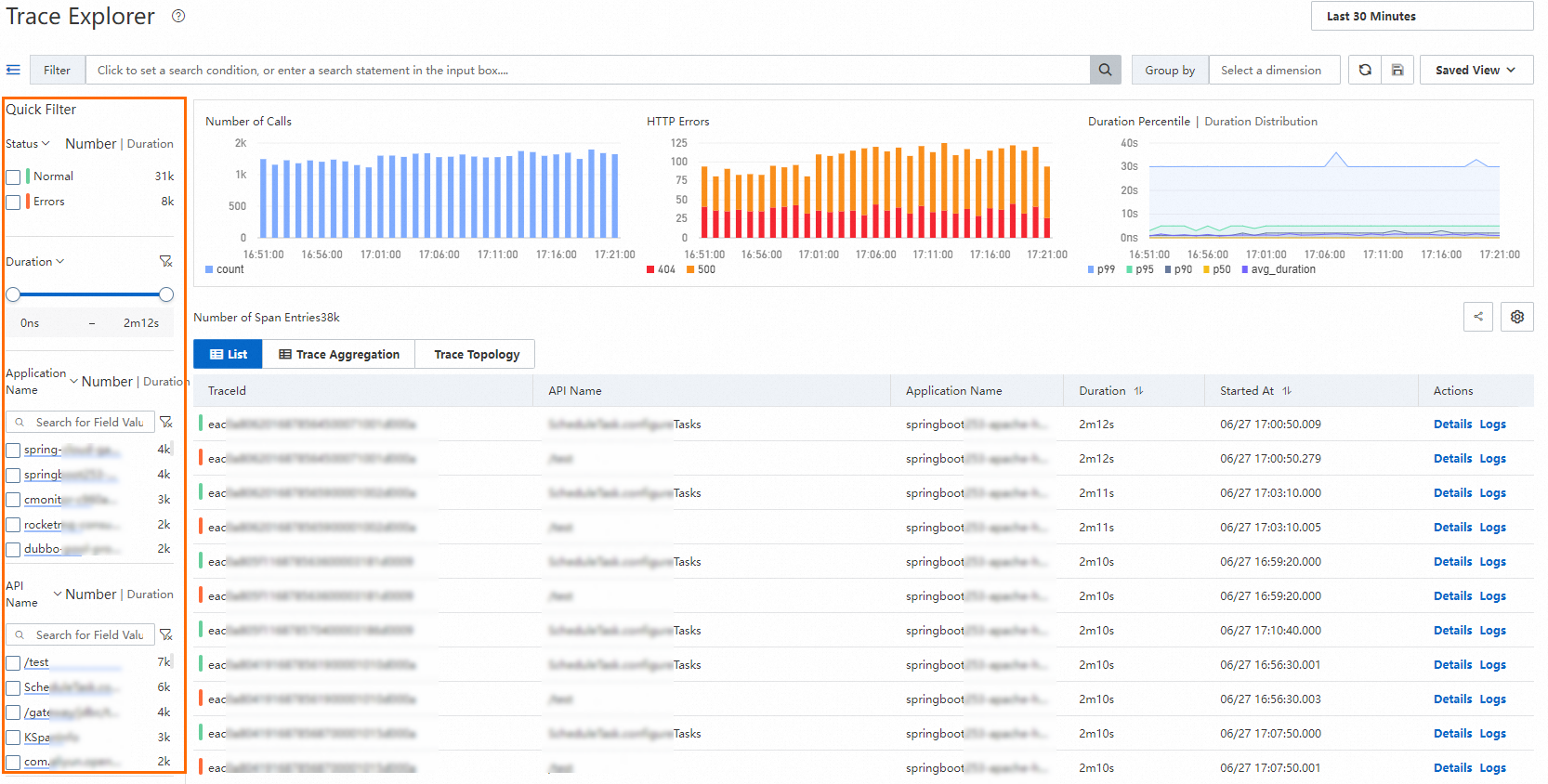Trace Explorer provides multiple search methods, including a filter panel, a query panel, and a search box. The search condition settings are automatically synchronized across all search methods. You can choose the method that is most convenient for you.
Filter panel
In the Saved Filters section on the Trace Explorer page, you can query traces by status, duration, application name, API name, or host address. For example, if you select the Exception check box, you can filter traces that meet the statusCode=2 condition. If you select an application or API, you can filter the traces of the application or API.
The filter panel supports multi-level filtering and allows you to easily filter traces. The real-time data of filtered traces can be displayed on the Trace Explorer page to help you quickly identify potential exceptions.

Query panel
On the Trace Explorer page, click the top search box. In the drop-down query panel, you can specify values for filter conditions and add custom attributes as filter conditions.

Search box
On the Trace Explorer page, you can directly enter query syntax in the top search box.

Trace Explorer supports simple query syntax and the following common operators. For more information about the query parameters of Trace Explorer, see Trace Explorer parameters.
| Operator | Description |
|---|---|
| AND | The AND operator is used to combine multiple query conditions and indicates that all specified conditions should be met at the same time. For example, serviceName="arms-demo" AND statusCode=2 indicates that abnormal traces of the arms-demo application are queried. |
| = | The EQUAL TO operator is used to query traces by specifying the value of a filtering field. If the value is a string, the string should be enclosed in double quotation marks (""). If the value is a number, it does not need to be enclosed with double quotation marks (""). Example: serviceName="arms-demo",statusCode=2. |
| > | The GREATER THAN operator can only be used for numerical comparison. Example: duration>10000000. |
| < | The LESS THAN operator can only be used for numerical comparison. Example: duration<30000000. |
| IN | The IN operator is used to query traces that meet any of the specified conditions. For example, ip IN ("127.0.0.1","192.168.0.1") indicates that traces whose IP address is 127.0.0.1 or 192.168.0.1 are queried. The IN operator consists of a pair of parentheses () around specified values. Each value must be enclosed in double quotation marks (""). If multiple values are specified, separate them with commas (,). You must specify at least one value. |
Sample query syntax:
- Query abnormal traces of the arms-demo application.
serviceName="arms-demo" AND statusCode=2 - Query the traces for /createOrder/pc and /createOrder/mobile API calls whose response time was longer than 3 seconds.
spanName IN ("/createOrder/pc","/createOrder/mobile") AND duration>3000000000